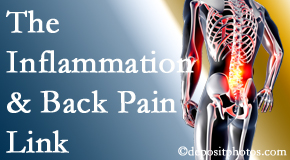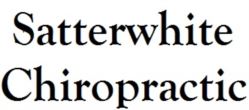Satterwhite Chiropractic Treats Back Pain and Its Inflammatory Process
Red. Swollen. Hot. Painful. Signs of inflammation that no Oxford back pain patient wants to suffer. Satterwhite Chiropractic delivers chiropractic services to reduce back pain by identifying and dealing with any associated inflammation.
INFLAMMATION AND BACK PAIN RELATED
How can you tell if there’s inflammation? Like other issues, researchers search for a means to measure it. To measure inflammation, researchers look for inflammatory biomarkers, biological markers like tumor necrosis factor alpha (TNF-α), C-reactive protein (CRP), and interleukin-6, interleukin-1β, that showed an increase. Researchers have discovered that chronic inflammation increased cytokine production and activated pro-inflammatory pathways that may cause non-specific low back pain. (1) Researchers observed systemic inflammation in chronic LBP and may influence transition from acute to persistent low back pain. Particularly, CRP was discovered to be elevated in acute low back pain patients versus control patients. TNF was greater in back pain patients particularly in patients with depression. (2) Since researchers have already verified that inflammation is linked to back pain, Satterwhite Chiropractic knows that inflammation must be reduced to help in reducing Oxford back pain.
HOW TO STOP INFLAMMATION
Well, first, know what inflammation does. Researchers applied lipopolysaccharide (LPS) to simulate intervertebral disc degeneration in experiments. They want to figure out what may help reduce the generated back pain that accompanies it and/or even avoid the degeneration in the first place so we humans don’t have to be subjected to low back pain at all! That’s a tough call though, Satterwhite Chiropractic understands. But follow this: researchers used LPS to establish the degeneration that preceded low back pain. They discovered that procyanidin B3 (PRO-B3) found in our diets inhibited the production of inflammatory markers - tumor necrosis factor α (TNF-Α), interleukin-6 (IL-6), prostaglandin E2 (PGE2) and nitric oxide – associated with disc degeneration. It also prevented the loss of the disc’s gelatin nucleus pulposus cells and structural damage of its anulus fibrosus (outer rings of disc). What does all this signify to researchers seeking a way to stop degenerative disc degeneration (DDD)? PRO-B3 may be looked at as a treatment agent for intervertebral disc degeneration (IVDD). This is a welcome note for those 80% of us adults who are likely to have IVDD, a major cause of low back pain. (3) Another recent paper described that the p38 MAPK inflammatory pathway may be able to postpone DDD utilizing the tyrosine kinase inhibitor, Genistein. (4) That’s hopeful in the treatment of Oxford back pain and inflammation.
Vitamin D FOR INFLAMMATION
Research states that vitamin D deficiency is linked with low back pain that is stronger in younger women and in those with more severe deficiency. (5) Vitamin D deficiency is linked to lumbar disc disease and more severe low back pain in postmenopausal women. (6) Let’s talk about your vitamin D status at your next Oxford chiropractic appointment.
CONTACT Satterwhite Chiropractic
Listen to this PODCAST with Dr. Sarah Murrow on The Back Doctors Podcast with Dr. Michael Johnson. In this episode, Dr. Murrow and her patient present how the Cox® Technic System alleviated back pain due to disc bulges.

